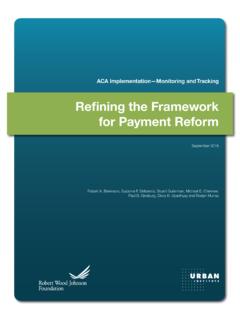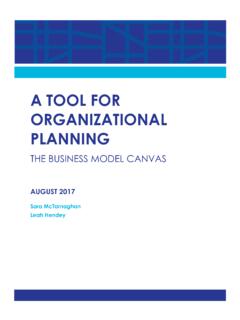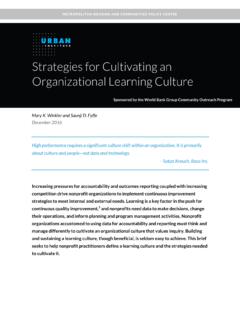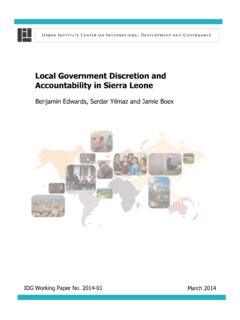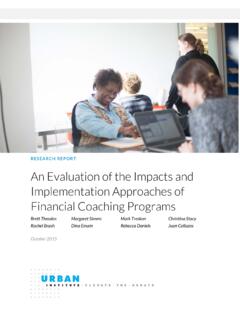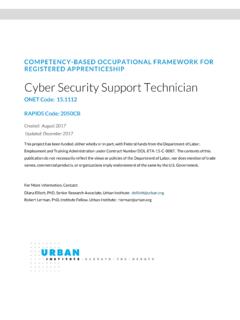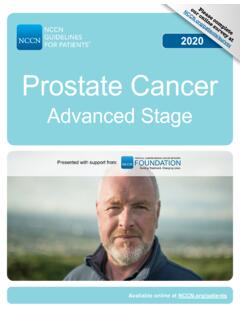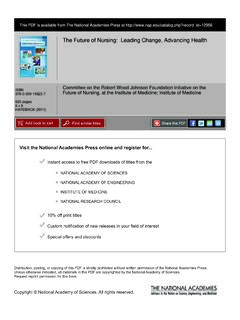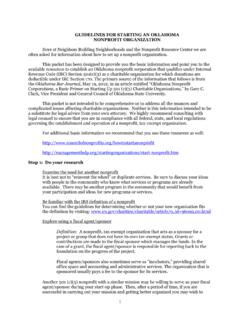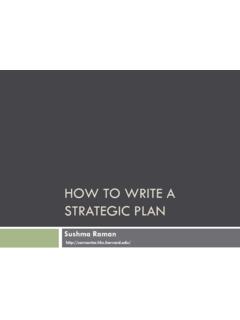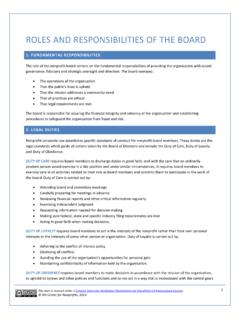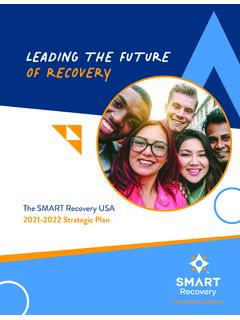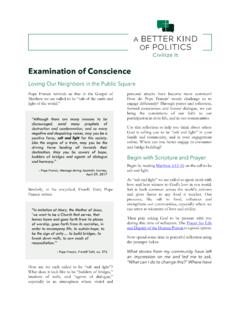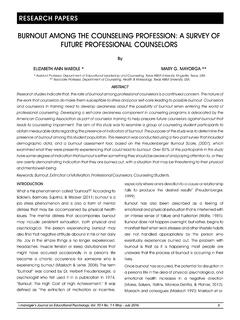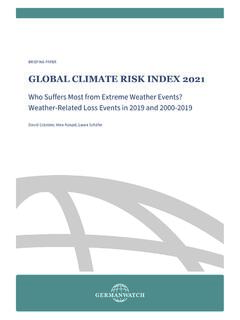Transcription of RESEARCH REPORT Nonprofit Trends and Impacts 2021
1 R E S E A R C H R E P O R T Nonprofit Trends and Impacts 2021 National Findings on Donation Trends from 2015 through 2020, Diversity and Representation, and First-Year Impacts of the COVID-19 Pandemic Lewis Faulk Mirae Kim Teresa Derrick-Mills Elizabeth Boris S C H OO L O F P U B L I C A F F A I R S , S C H A R S C H O O L O F P O L I C Y U R B A N I N S T I T U T E U R B A N I N S T I T U T E A M E R I C A N U N I V E R S I T Y A N D G O V E R N M E N T , G E O R G E M A S O N U N I V E R S I T Y Laura Tomasko Nora Hakizimana Tianyu Chen Minjung Kim U R B A N I N S T I T U T E U R B A N I N S T I T U T E S C H O O L O F P U B L I C A F F A I R S , C E N T E R F O R S O C I A L A M E R I C A N U N I V E R S I T Y I M P A C T S T R A T E G Y , U N I V E R S I T Y O F P E N N S Y L V A N I A Layla Nath S C H O O L O F P U B L I C A F F A I R S.
2 A M E R I C A N U N I V E R S I T Y October 2021 C E N T E R O N N O N P R O F I T S A N D P H I L A N T H R O P Y A B O U T THE U R B A N I N S T I T U T E The Nonprofit Urban Institute is a leading RESEARCH organization dedicated to developing evidence-based insights that improve people s lives and strengthen communities. For 50 years, Urban has been the trusted source for rigorous analysis of complex social and economic issues; strategic advice to policymakers, philanthropists, and practitioners; and new, promising ideas that expand opportunities for all. Our work inspires effective decisions that advance fairness and enhance the well-being of people and places.
3 A B O U T A M E R I C A N U N I V E R S I T Y S C H O O L O F P U B L I C A F F A I R S Established in 1934, American University's School of Public Affairs (SPA) is ranked 13 overall by News & World REPORT , offering undergraduate, graduate, doctoral, and executive-level programs to build and enhance careers in public service. The school offers a unique pairing of access to Washington, with world-renowned faculty and transformational RESEARCH , driving progress in policy, politics, government, law, and public administration. SPA is also ranked third in the and first in the area for public affairs RESEARCH impact.
4 A B O U T T H E S C H A R S C H O O L O F P O L I C Y A N D G O V E R N M E N T The Master s in Public Administration (MPA) program at George Mason University s Schar School of Policy and Government is designed to provide a comprehensive understanding of how leadership, management, policy, and politics intersect. Located close to the nation s capital, the Schar School connects students to jobs, internships, and networking that can only be found in the Washington, , area. The Master s in Public Administration Program prepares students to be leaders and managers who solve problems and advance the public good in all sectors and levels of government in the United States and throughout the world.
5 Copyright October 2021. Urban Institute. Permission is granted for reproduction of this file, with attribution to the Urban Institute. Cover image by Tim Meko. Contents Figures and Tables vi Acknowledgments ix Executive Summary xi Introduction 1 Background 5 About the Nonprofits in Our Study 7 Findings on Nonprofit Program Locations and Demographics 11 The Distribution of US Nonprofits across Urban, Suburban, and Rural Areas Aligns with That of the US Population 12 The Majority of Nonprofit Headquarters Are in Low-Income Communities 14 Nonprofits Serve a Wide Range of People 15 Nonprofits Organizational Demographics 15 We Find That More Nonprofits Have Board Members of Color Than Shown in Previous National Studies.
6 But People of Color Are Still Underrepresented among Nonprofit Leadership 15 Majorities of Executive Directors Are Female, Majorities of Staff Are Women, and a Slight Majority of Board Chairs Are Men 16 Staffs and Boards Have Similar Characteristics and Are More Diverse Than Executive Directors and Board Chairs 17 Understanding Donation Trends 18 Donation Trends by Type and the Importance of Donations to Organizational Missions 21 Most Organizations of All Sizes Say Donations from Individuals Are Important to Their Work 21 More Organizations Experienced Overall Decreases in Donations in 2020 Than in the Preceding Five-Year Period 22 Organizations Experienced Similar Trends across Donation Types 23 Organizations That Reported Donations
7 Are Essential to Their Revenue Streams Were More Likely to Experience Decreases in Donations in 2020 26 Donation Trends by Community Characteristics 27 A Larger Share of Organizations in Urban Cores Than in Rural Areas Reported That Overall Donations Increased from 2015 through 2019, but That Trend Reversed in 2020 28 Organizations in High-Income Communities Were More Likely to Experience Increases in Donations from 2015 through 2019 Than Those in Lower-Income Communities 29 Organizations in Majority-POC and Majority-White Communities Experienced Similar Donation Trends in 2020 and the Five Preceding Years 30 IV C O N T E N T S Donation Trends by Organization Size and Subsector 32 For All Subsectors and Organizations of Nearly All Sizes, Larger Shares of Organizations Experienced Decreases in Donations in 2020.
8 And Arts Organizations Experienced Decreases Most 33 Organizations with Expenses of $1 Million or More Were Less Likely to Experience Declines in Donations 34 Except in Education, Large Organizations Were More Likely to Experience Increased Donations in 2020 Than Small Organizations 35 Donation Trends by Organizational Demographics 36 The Donation Experiences of Organizations With and Without Executive Directors of Color Were More Similar in 2020 Than in the Preceding Five Years 36 Donor-Advised Funds 37 The Events of 2020 Dramatically Impacted Nonprofits 38 Full-Time Employment Stayed Roughly the Same.
9 But Employment of Part-Time Staff and Volunteers Declined 38 Fee-for-Service Revenue Declined for Most Nonprofits 39 Organizations Sought Ways to Weather the Crisis 41 Implications of Findings 43 Glossary 47 Appendix A. Understanding the Nonprofit Sector through a Long-Term Partnership 50 Continued Partnerships, Data Building, and Data Sharing 50 Future Access to Data from the Spring 2021 National Survey of Nonprofit Trends and Impacts 51 Publicly Available Data 51 Restricted-Access Data 51 Appendix B. Details on Methodology 53 Sampling Detail 53 Sample Frame Inclusion Criteria 53 Sample Frame Exclusion Criteria 54 Stratified Random Sample 55 Oversampling 56 Contact Information and Recruitment 57 Recruitment 57 Response and Completion Rates and Weighting 58 Survey Weights 62 Design Effects 62 Other Data Sources 63 IRS Forms 990 and 990 EZ 63 C O N T E N T S V 2018 American Community Survey 5-Year Estimates 64 Center for Health Statistics Data 64 Federal Office of Rural Health Policy Designations 64 Appendix C.
10 Additional Data 65 Distribution of People by US Community Characteristics 65 Survey Data on Types of People Served 66 Survey Data on Staff and Board Characteristics 68 Notes 73 References 75 About the Authors 77 Statement of Independence 78 VI F I G U R E S A N D T A B L E S Figures and Tables Figure 1: Subsector Breakdown of Nonprofits Included in This Study and of All Public Charities 7 Figure 2: Size Breakdown of Nonprofits in This Study and of All Public Charities, by Reported Expenses 8 Figure 3: The Geographic Distribution of Nonprofits Closely Mirrors That of the US Population 12 Figure 4: Within Particular Nonprofit Subsectors, Similar Shares of Organizations Are in Urban, Suburban, and Rural Areas 13 Figure 5: The Share of Nonprofits in Lower-Income Areas Mirrors That of the US Population 14 Figure 6: Majority of Nonprofits REPORT That Donations from Individuals Are Essential or Very Important to Their Work, and They Are Especially Important for Smaller Nonprofits 22 Figure 7.

